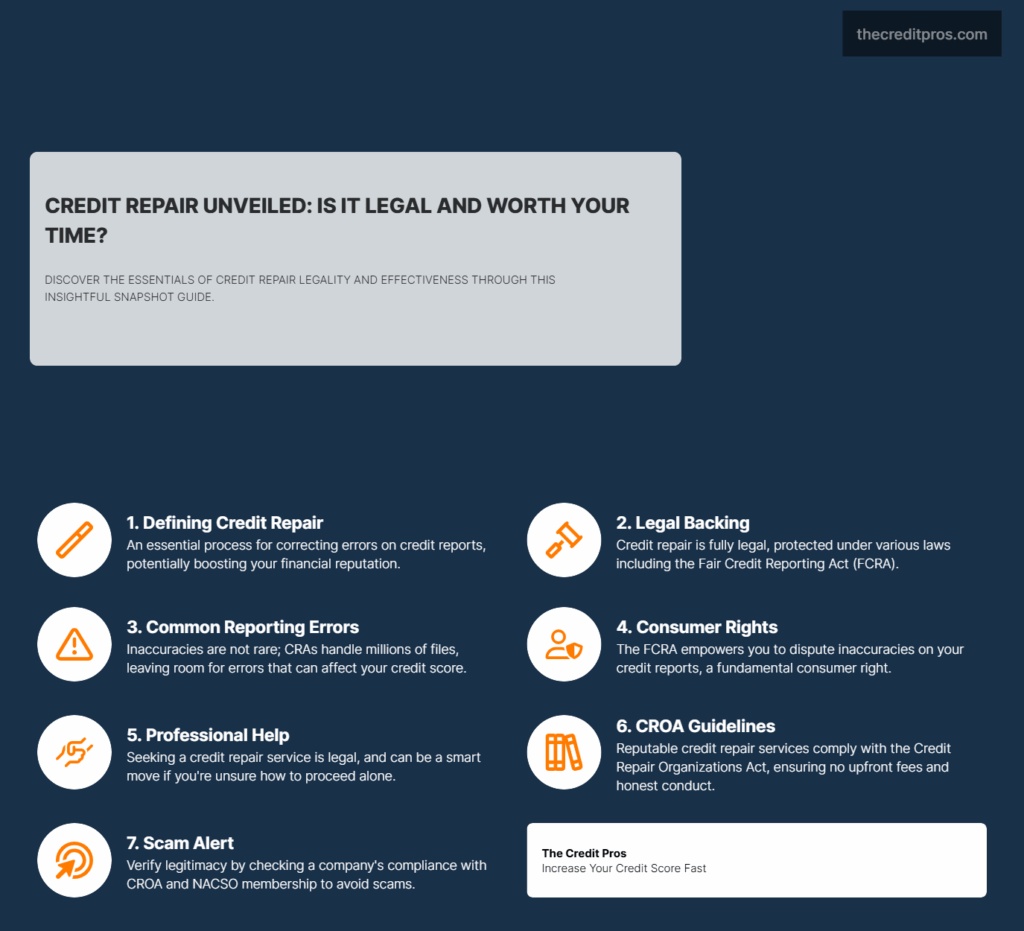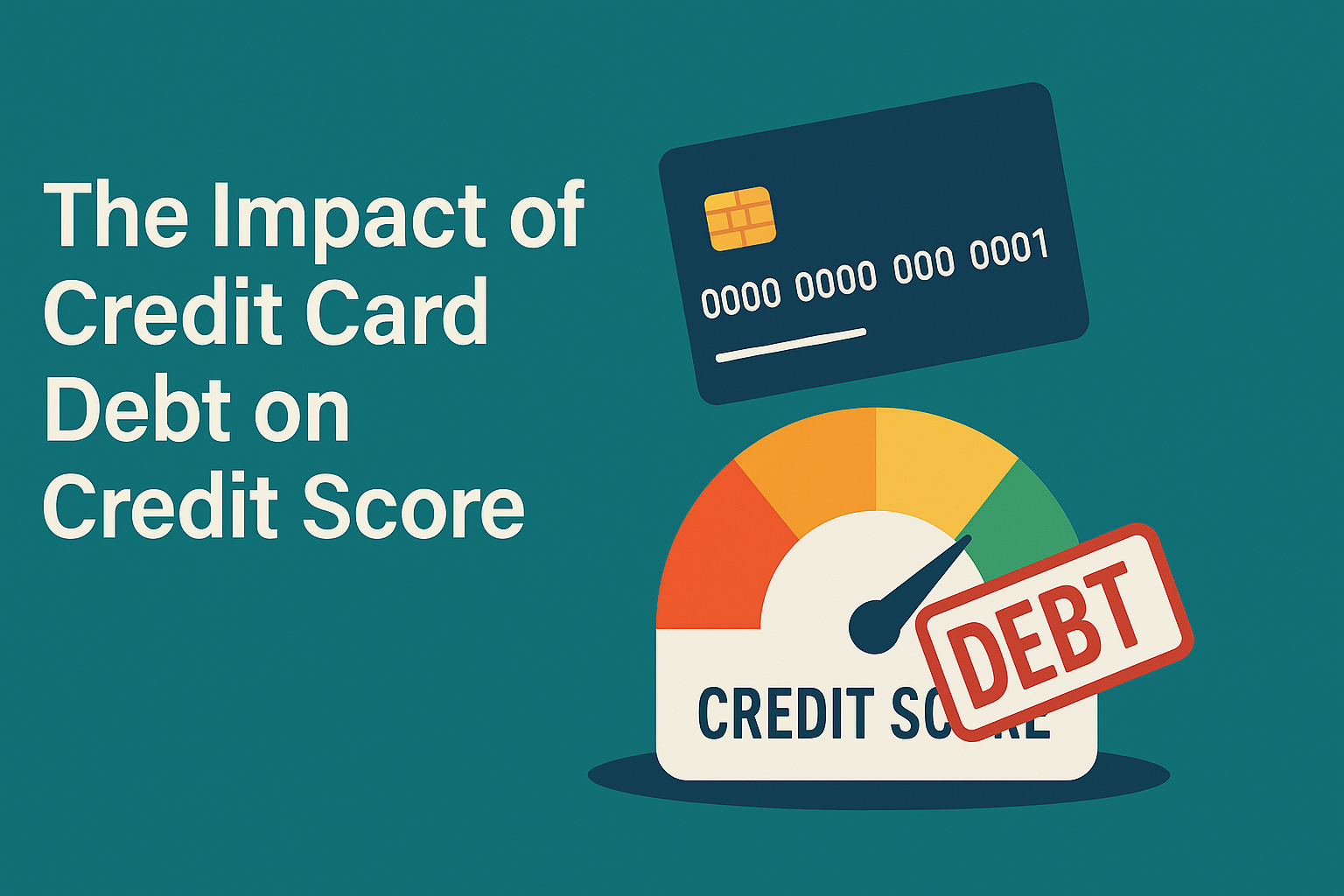Your credit score might seem like just another number, but the relationship between your credit card debt and that three-digit figure is far more intricate than most people realize. While you’ve probably heard the basic advice about keeping balances low, the reality involves hidden calculations, timing nuances, and strategic decisions that can make the difference between a good credit score and an exceptional one. What happens when you carry debt across multiple cards versus concentrating it on one? Why does the timing of your payments matter as much as the amount you pay? Understanding the impact of credit card debt is essential for making informed financial choices.
Understanding the impact of credit card debt is crucial for financial health. Many people overlook the importance of managing their credit card debt, not realizing how much it can affect their future. The impact of credit card debt can significantly alter your financial landscape if not managed properly. It’s essential to address this issue proactively.

Understanding these complexities becomes critical when you consider how debt management decisions made today can impact your financial opportunities for years to come. The common wisdom about credit utilization barely scratches the surface of how credit scoring models actually evaluate your debt patterns. Whether you’re currently managing existing debt or trying to prevent future credit score damage, the strategies you choose will either accelerate your financial progress or create obstacles that take years to overcome.
The Hidden Mathematics of Credit Utilization: Beyond the 30% Rule
Many individuals underestimate the profound impact of credit card debt on their overall financial health. Credit scoring models employ sophisticated algorithms that evaluate your debt utilization across multiple dimensions, creating a far more complex calculation than the widely cited 30% rule suggests. Individual card utilization ratios carry different weight depending on your credit limit tiers, with cards holding limits above $10,000 receiving enhanced scrutiny compared to lower-limit accounts. The scoring models simultaneously evaluate your per-card utilization and aggregate utilization, but these calculations don’t simply average your ratios—instead, they create layered assessments that can penalize high utilization on any single card even when your overall utilization appears acceptable.
Recognizing the implications of the impact of credit card debt can lead to better financial choices. It’s clear that the impact of credit card debt goes beyond just numbers; it can shape your financial future. Ultimately, the real impact of credit card debt lies in how it can affect your daily life and long-term goals. Delving deeper into the impact of credit card debt can reveal patterns that significantly affect your creditworthiness. Understanding the implications of the impact of credit card debt is fundamental to achieving financial stability. Each decision relating to credit card debt has its consequences, highlighting the impact of credit card debt on financial health. Managing the impact of credit card debt is an ongoing process that requires vigilance and strategic planning. To mitigate the impact of credit card debt, regular assessments of your financial situation are necessary.
The psychological impact on credit scoring algorithms becomes evident when examining “maxed out” cards versus strategically distributed balances. A single card at 95% utilization can trigger more severe scoring penalties than three cards each at 40% utilization, despite the latter scenario representing higher absolute debt levels. Payment history is the single most important factor contributing to your credit scores—responsible for about 35% of your FICO® Score. This mathematical reality stems from the scoring models’ interpretation of maxed-out cards as indicators of financial distress, regardless of your payment consistency on other accounts.
The influence of the impact of credit card debt can be far-reaching, affecting more than just your credit score. Awareness of the impact of credit card debt is the first step toward effective management. Ultimately, the impact of credit card debt can dictate your access to future credit opportunities. Understanding the full impact of credit card debt can empower you to make better choices regarding your finances. Recognizing the impact of credit card debt on one’s overall financial health is vital for future planning. Being proactive about the impact of credit card debt can help mitigate its negative effects over time. Addressing the impact of credit card debt early can lead to more favorable financial outcomes in the future.
Every financial decision we make can affect the impact of credit card debt on our lives. Understanding the true impact of credit card debt allows for more strategic financial planning. Through careful management, you can minimize the impact of credit card debt on your financial future. Utilization timing creates distinct impacts separate from payment timing, a nuance that escapes most debt management strategies. Credit card companies typically report your statement balance to credit bureaus, meaning the timing of your payments relative to your statement closing date determines the utilization ratio that affects your score. Your total debt, or amounts owed, is responsible for about 30% of your FICO® Score, with credit utilization rate serving as a significant component of that factor.
The counterintuitive reality of closing cards reveals itself through utilization ratio mathematics that can devastate credit scores despite reducing overall debt exposure. When you close a credit card account, you eliminate that available credit from your utilization calculations while maintaining the same debt levels across remaining cards. This mathematical shift can instantly transform a manageable 25% overall utilization into a problematic 40% utilization, triggering immediate score reductions that can take months to recover even with consistent payments.
Keeping balances below 10% creates exponentially better credit score results than maintaining the commonly cited 30% threshold, a distinction that reflects the scoring models’ preference for minimal revolving debt utilization. Individuals with exceptional credit scores tend to keep utilization rates below 10%, while utilization percentages exceeding 30% tend to have bigger negative effects on credit scores. Zero-balance cards contribute significantly to your overall credit profile by maintaining available credit that improves your utilization calculations, but they require strategic management to prevent issuer closures due to inactivity.
Credit limit increases can backfire when not managed strategically, particularly if they encourage increased spending that negates the utilization benefits. The optimal approach involves requesting credit limit increases during periods of controlled spending and stable income, allowing the additional available credit to improve your utilization ratios without creating temptation for additional debt accumulation.
How Debt Accumulation Creates Multiple Credit Score Penalties
Debt accumulation creates cascading negative effects across multiple credit scoring factors simultaneously, amplifying the impact beyond simple utilization calculations. Payment history deterioration accelerates as debt loads increase because higher balances create larger minimum payment requirements that strain monthly budgets. The relationship between increasing debt-to-income ratios and credit scoring manifests through behavioral patterns that scoring models detect, even though debt-to-income ratios aren’t directly included in credit score calculations.
Credit mix disruption occurs when debt concentrates heavily on revolving accounts while installment loan payments remain manageable, creating an imbalanced credit profile that scoring algorithms interpret as over-reliance on high-cost credit products. Debt consolidation attempts often create temporary credit score deterioration before improvement occurs, as new account openings, hard inquiries, and changing utilization patterns simultaneously impact multiple scoring factors. The process requires strategic timing and careful management to minimize these transitional negative effects.
The specific credit score impact when minimum payments become unmanageable follows predictable patterns that compound over time. Late payment reporting thresholds at 30, 60, and 90 days create stepped score deterioration, with each threshold representing increasingly severe penalties that can reduce scores by 60-110 points depending on your starting credit profile. Just one payment that’s 30 days late can cause a significant drop in your credit scores, while payments less than 30 days late typically result in penalty charges without affecting credit scores.
“When you open a new credit card account with a zero balance, you increase your total amount of available revolving credit. If you have balances on other revolving accounts, the new account will reduce your overall utilization rate, which could have a positive impact on your credit scores.”
Debt spreading across multiple credit products amplifies negative effects through a mathematical phenomenon where scoring models evaluate both individual account performance and portfolio-level risk indicators. Multiple accounts approaching their credit limits simultaneously signals systematic financial stress to scoring algorithms, creating penalties that exceed the sum of individual account impacts. Balance transfers and debt consolidation loans create temporary credit score volatility through several mechanisms: hard inquiries from new applications, changes in credit mix ratios, and altered utilization patterns that require 1-2 billing cycles to stabilize in credit reports.
The amplification effect becomes particularly pronounced when debt spreads to different types of credit products beyond traditional credit cards. Store credit cards, personal loans, and other credit products each carry distinct reporting patterns and utilization calculations that can create unexpected scoring impacts when debt levels rise across multiple product categories.
Managing Credit History Length During Debt Reduction
Closing older accounts to eliminate debt creates long-term consequences that extend far beyond immediate debt relief, fundamentally altering the mathematical foundation of your credit score calculations. Length of credit history accounts for approximately 15% of your FICO® Score, with credit scores factoring in the ages of your oldest and newest credit accounts plus the average age of all credit accounts. When you close your oldest account, the impact doesn’t immediately appear because closed accounts in good standing remain on credit reports for 10 years from the closing date.

Ultimately, it’s about reducing the impact of credit card debt to create a more secure financial environment. In conclusion, the impact of credit card debt is significant and should be prioritized in financial discussions. A deeper comprehension of the impact of credit card debt can empower individuals to take control of their finances.
The delayed impact creates a ticking time bomb effect where your credit scores can suddenly drop years later when old accounts finally fall off your credit reports. After 10 years, both your average age of accounts and the age of your oldest account could decline simultaneously, potentially creating compounding negative impacts on your credit scores. This timeline makes strategic account management crucial for maintaining long-term credit score stability.
Debt concentration on newer accounts damages average account age calculations by skewing your utilization toward accounts with shorter credit histories. Scoring models evaluate not just your overall utilization but also the distribution of balances across accounts of different ages. Maintaining older accounts with minimal balances preserves the credit history length benefits while demonstrating responsible long-term account management to scoring algorithms.
The strategic value of older accounts extends beyond simple age calculations because these accounts often carry more favorable terms and represent established relationships with creditors. Credit mix becomes increasingly critical as debt levels rise because scoring models interpret diverse credit management as evidence of financial sophistication and stability. The credit mix factor, responsible for about 10% of your FICO® Score, reflects the number and variety of open credit accounts, with responsible management of both installment and revolving credit benefiting your scores.
Preserving credit history length while actively paying down debt requires tactical account management that balances debt reduction goals with credit scoring optimization. The optimal approach involves maintaining older accounts with small recurring charges such as streaming subscriptions or utility payments, ensuring regular activity that prevents issuer closures due to inactivity. These small recurring charges generate positive payment information monthly while preserving the account age benefits that support your credit scores.
Opening new accounts for balance transfers creates dual negative impacts through hard inquiries that temporarily reduce scores and average account age reductions that persist long-term. The mathematical trade-off between utilization improvement and account age reduction requires careful analysis of your specific credit profile and debt levels to determine optimal strategies.
Strategic Debt Paydown for Maximum Credit Score Recovery
The optimal sequence for debt paydown to maximize credit score recovery diverges significantly from traditional financial advice that focuses solely on interest rate minimization. Credit score optimization requires prioritizing accounts that will create the most significant utilization ratio improvements, which often means targeting cards with the highest utilization percentages rather than the highest interest rates. This approach, sometimes called the “utilization avalanche” method, can produce faster credit score improvements that enable better refinancing opportunities for remaining debt.
Leveraging authorized user status and secured cards during debt repayment provides additional credit profile enhancement opportunities that accelerate score recovery. Authorized user accounts can immediately improve your credit mix and add positive payment history from established accounts, while secured cards offer controlled credit building opportunities that don’t require approval based on current debt levels. The strategic timing of credit limit increase requests during debt reduction can amplify utilization ratio improvements, but requests should align with demonstrated payment consistency and income stability.
Certain debt management approaches create accelerated credit score improvement through mathematical advantages in how scoring algorithms evaluate progress. The “avalanche vs. snowball” method, when applied specifically to credit score optimization, prioritizes paying cards down to specific utilization thresholds that trigger disproportionate score improvements. Research indicates that reducing utilization from 90% to 70% creates smaller score gains than reducing from 35% to 10%, making threshold-based paydown strategies more effective than proportional reduction approaches.
Maintaining credit mix diversity while concentrating debt payoff efforts requires strategic balance between revolving and installment debt management. The optimal approach often involves maintaining minimum payments on installment loans while aggressively targeting revolving debt, as utilization ratio improvements typically produce faster score gains than installment loan paydown. Balance transfer cards can improve utilization ratios without increasing absolute debt levels, but success requires disciplined spending control and strategic timing of transfers to maximize scoring benefits.
Threshold-Based Paydown Priorities:
- Cards above 90% utilization: Immediate priority for any available funds
- Cards between 50-89% utilization: Secondary priority after eliminating maxed-out cards
- Cards between 30-49% utilization: Target for reduction below 30% threshold
- Cards between 10-29% utilization: Focus on bringing below 10% for optimal scoring
- Cards below 10% utilization: Maintain current levels while addressing higher-utilization accounts
The tactical use of balance transfer cards requires understanding how new account openings affect both utilization calculations and credit mix ratios. Successful implementation involves timing transfers to occur after statement closing dates to minimize reporting of high balances, while ensuring transfer amounts create meaningful utilization improvements that offset the temporary negative impact of hard inquiries and reduced average account age.
Paying cards down to specific thresholds creates disproportionate score improvements because scoring algorithms use utilization bands rather than linear calculations. Moving from 31% to 29% utilization often produces larger score gains than moving from 45% to 43%, reflecting the mathematical structure of credit scoring models that penalize utilization above certain thresholds more severely than proportional increases within acceptable ranges.
Long-Term Credit Profile Implications of Current Debt Decisions
Current debt management decisions create lasting impacts on creditworthiness assessments that extend years beyond the immediate debt resolution period. Lenders evaluate not just current credit scores but also credit report patterns that reveal debt management capabilities and financial stability over time. Successfully managed debt creates stronger credit profiles than debt avoidance because it demonstrates proven ability to handle credit responsibly under various financial conditions.
The seven-year timeline for most negative marks creates a diminishing impact pattern where older negative information carries less weight in credit scoring calculations. However, the specific type of negative mark determines both the initial impact severity and the recovery timeline. Charge-offs and debt settlements create more severe and longer-lasting impacts than late payments, while successful debt management without negative marks positions you for premium credit product eligibility as your credit history matures.
Debt settlement and charge-offs create lasting impacts that extend beyond the seven-year reporting period through their effects on lender underwriting decisions and available credit products. Even after negative marks fall off credit reports, some lenders maintain internal records that influence future credit decisions. The relationship between debt management experience and premium credit product eligibility becomes evident in lender underwriting criteria that favor applicants with demonstrated debt management capability over those with limited credit experience.
Lenders increasingly view successfully managed debt as evidence of financial resilience and credit management sophistication. Applicants who have successfully paid down significant debt often receive more favorable terms than those with pristine but limited credit histories because they’ve demonstrated ability to manage credit through various financial circumstances. This perspective shift reflects lender recognition that debt management experience indicates lower risk for future credit performance.
The specific credit score benefits that emerge from demonstrated debt management capability include improved scoring algorithm treatment of new credit applications and enhanced qualification for premium credit products. Credit scoring models incorporate factors that reward consistent payment performance during periods of higher utilization, creating long-term scoring advantages for individuals who successfully manage debt reduction. These advantages compound over time as positive payment history accumulates and utilization ratios improve, creating accelerating credit score growth that opens access to better credit terms and lower interest rates across all credit products. The impact of credit card debt should not be overlooked; it plays a significant role in your creditworthiness. To fully appreciate the impact of credit card debt, one must consider both short-term and long-term effects.
Bringing It All Together: Your Credit Score’s Complex Relationship with Debt
The intricate relationship between credit card debt and your credit score reveals itself through sophisticated algorithms that extend far beyond simple utilization percentages. Your debt management decisions today create mathematical ripple effects across multiple scoring factors—from utilization ratios and payment history to credit mix and account age calculations. The timing of payments, strategic distribution of balances, and preservation of older accounts all contribute to a complex scoring ecosystem that rewards informed decision-making over conventional wisdom.

Understanding these hidden mechanics empowers you to transform debt from a credit score liability into a strategic tool for building stronger creditworthiness. Successfully managed debt demonstrates financial resilience to lenders, while tactical paydown strategies can accelerate score recovery and unlock better credit opportunities. The mathematical reality is clear: your credit score isn’t just measuring your current debt levels—it’s evaluating your entire approach to credit management, creating lasting advantages for those who master the system’s true complexity rather than following oversimplified rules.

